 There are three main types of rocks: sedimentary, igneous, and metamorphic. Each of these rocks are formed by physical changes, such as melting, cooling, eroding, compacting, or deforming, that are all part of the rock cycle. The rock components of the Earth's crust are slowly but constantly being changed from one form to another, as illustrated in the chart below: 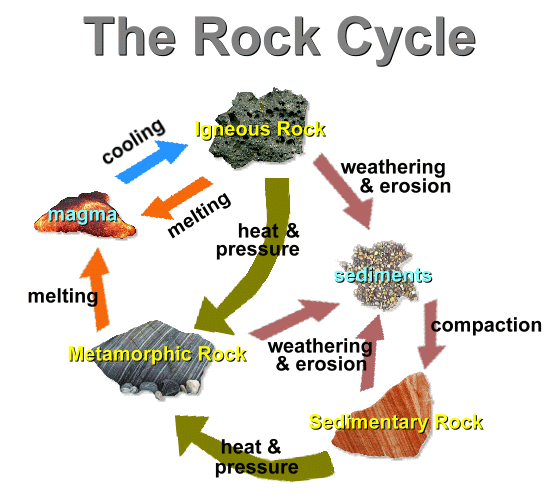 The rock cycle is driven by two forces:
Sedimentary Rocks 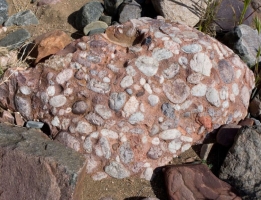 Sedimentary rocks are formed from pieces of other existing rock or organic material. The formation of some sedimantary rock begins with the weathering of exposed rock into small fragments. Erosion by wind, water, ice, or biological activity helps transport these fragments to a new location. Once the sediment settles somewhere, and enough of it collects, the lowest layers become compacted so tightly that they form solid rock.
Sedimentary rocks are formed from pieces of other existing rock or organic material. The formation of some sedimantary rock begins with the weathering of exposed rock into small fragments. Erosion by wind, water, ice, or biological activity helps transport these fragments to a new location. Once the sediment settles somewhere, and enough of it collects, the lowest layers become compacted so tightly that they form solid rock.
Other sedimentary rocks form from chemical precipitation, when the solution it is dissolved in, usually water, evaporates and leaves the compound behind. This occurs as water travels through Earth’s crust, weathering the rock and dissolving some of its minerals, transporting it elsewhere. These dissolved minerals are precipitated when the water evaporates. Metamorphic Rocks 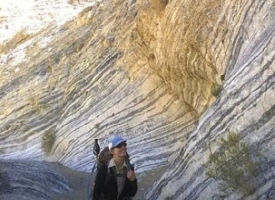 Metamorphic rocks have been changed from their original form by very high heat or pressure. When a rock with flat or elongated minerals is put under immense pressure, the minerals line up in layers, getting squeezed into flat sheets.
Metamorphic rocks have been changed from their original form by very high heat or pressure. When a rock with flat or elongated minerals is put under immense pressure, the minerals line up in layers, getting squeezed into flat sheets. When granite, for example, undergoes this process it turns into gneiss. Other metamorphic rocks are formed without the obvious layering. For example, bituminous coal, limestone, and sandstone, given enough heat and pressure, can turn into anthracite coal, marble, and quartzite. Igneous Rocks 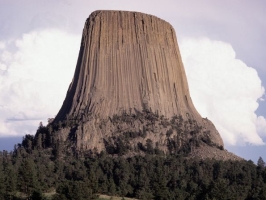 Igneous rocks form when molten hot rock called magma cools and solidifies.
Igneous rocks form when molten hot rock called magma cools and solidifies.Magma can cool slowly within the crust, over centuries to millions of years, forming intrusive igneous rock. It can also erupt onto the surface and cool quickly, within seconds to years, forming extrusive igneous rock. Granite and diorite are examples of common intrusive igneous rocks. They have a coarse texture with large grains, indicating that they spent thousands or millions of years cooling down inside the earth, a length of time that allowed large mineral crystals to grow. 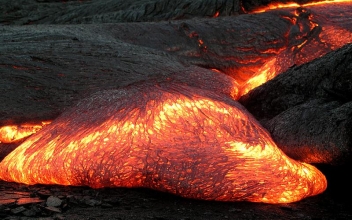 Alternatively, rocks like basalt and obsidian have very small grains and a fine texture. When magma erupts into lava, it cools more quickly than it would if it stayed inside the earth, giving crystals less time to form. These extrusive igneous rocks can also have a 'holey' texture, when the magma still has gases inside of it so when it cools, the gas bubbles are trapped and end up giving the rock a bubbly texture. An example of this would be pumice.
Alternatively, rocks like basalt and obsidian have very small grains and a fine texture. When magma erupts into lava, it cools more quickly than it would if it stayed inside the earth, giving crystals less time to form. These extrusive igneous rocks can also have a 'holey' texture, when the magma still has gases inside of it so when it cools, the gas bubbles are trapped and end up giving the rock a bubbly texture. An example of this would be pumice.
The rock cycle is affected by various environmental and human activities, including:
|